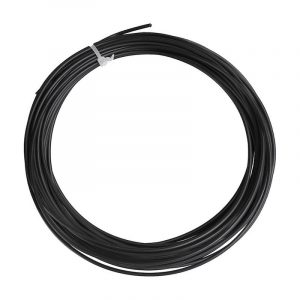ASA 3D Printer Filament

What is ASA?
ASA is an engineering-grade filament, featuring many of the same properties as our rABS – including high strength – with the added benefit of UV resistance to withstand outdoors environments.
This filament has been modified to ensure zero warping and excellent adhesion – both interlayer and to the bed – to ensure efficient 3D printing.
Recommended for functional prototypes and end-use parts, particular those which be positioned outdoors / exposed to the elements.
50% Recycled plastic
Showing all 8 results
-

Black ASA 3D Printer Filament
£29.99 Ex. VAT -

White ASA 3D Printer Filament
£29.99 Ex. VAT -

2.3kg Black ASA 3D Printer Filament
£84.99 Ex. VAT -

4.5kg Black ASA 3D Printer Filament
£159.99 Ex. VAT -

ASA 3D Printer Filament Sample – 50g
£3.33 Ex. VAT -
Sale!

2.3kg White ASA 3D Printer Filament
£42.49 – £84.99 Ex. VAT -
Sale!

3kg Black Pure ASA 3D Printer Filament 1.75mm
Original price was: £79.99.£59.99Current price is: £59.99. Ex. VAT -

Pack of 10 – Black ASA 3D Printer Filament – 1.75mm, 1KG
£375.99 Ex. VAT
Frequently Asked Questions
What is ASA filament?
The long name for ASA filament is Acrylonitrile Styrene Acrylate. ASA filament in an industrial-grade material for 3D printing, specifically developed as an alternative to ABS, offering the same mechanical properties, with the bonus on UV resistance.
Is ASA filament toxic?
Akin to ABS, 3D printing ASA can emit fumes which can possibly be toxic. These can be further minimised by an enclosure. Always read the Material Safety Data Sheet (MSDS) and follow Health & Safety guidance provided by the filamentive manufacturer.
Is ASA filament hygroscopic?
As with most plastics, ASA filament can absorb moisture from its surrounding environment and is therefore mildly hygroscopic. High humidity can exacerbate this further.
Poor layer adhesion, surface quality and inconsistent extrusion are symptoms of moisture absorption – to resolve your ASA filament should be dried in a convection oven for 4-6 hours.
How to print ASA filament?
ASA filament should be 3D-printed at a temperature between 230-260°C. Recommended heated bed temperature is 80-100°C. Print speed should be medium and fan should be off or very low (25%).
What is ASA filament used for?
ASA filament is used for 3D printing functional prototypes and end-use parts. Because ASA filament is UV resistant, it is perfectly suited to 3D prints for outdoor applications.
ASA filament not sticking
ASA filament not sticking is indicative of a few potential problems – the possible causes include, but are not limited to: build platform levelling, nozzle starting too far away from bed, first layer printing too fast, temperature settings and build platform adhesion.
It is imperative to resolve ASA filament not sticking to ensure the first layer of your print is well adhered to the build surface, ensuring the remainder of your 3D printed part is build on a solid foundation.
ASA filament versus ABS
ASA filament has a similar chemical structure versus ABS, plastic but offers three distinct advantages: improved mechanical properties, superior aesthetics and UV resistance. ASA filament is the most UV resistant material in 3D printing – ASA is ten times more weather resistant and UV-resistant than ABS.







